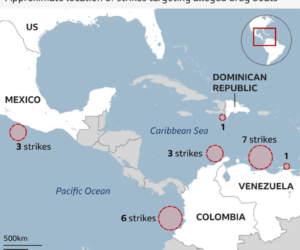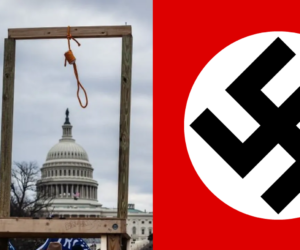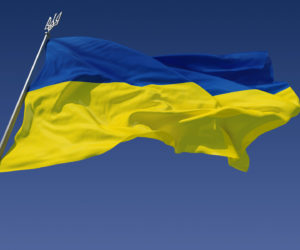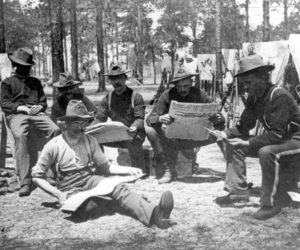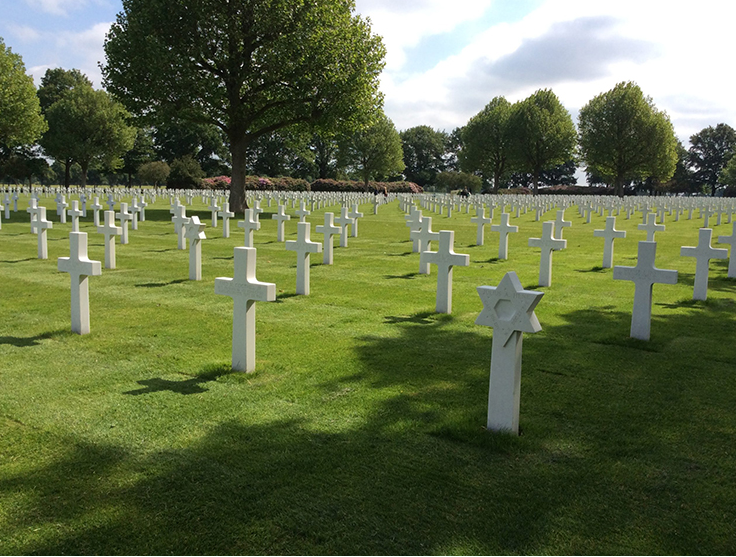
On May 8. 2005, President George W. Bush addressed the Dutch people and the world at the Netherlands American Cemetery and Memorial in Margraten, during a celebration in remembrance of those who served in World War II.
The hallowed 65-acre Margraten American Cemetery and Memorial, located in the beautiful rolling hills of Limburg, the Netherlands, is the last resting place to more than 8,000 Americans who gave their lives during World War II to liberate the Netherlands, and Europe, from the Nazi occupation. Additionally, the names of 1,722 missing American servicemembers are recorded on “Tablets of the Missing.”
In 2015 my wife and I visited the Margraten Cemetery and were moved by “the more than 8,000 white marble crosses and Star of David headstones laid out in long, silent curves across the pristine verdant lawn…”
While we noticed other symbols depicting the faith of these heroes, of course we did not give the race or ethnicity of the fallen a second thought.
Since then, we learned that of the 8,301 American soldiers buried at Margratenn at least 174 were African American, representing approximately 12.5 percent of the American liberators.
President Bush, in his 2005 remarks at Margraten did recognize one of these heroes.
Referring to the “young Americans who did not live to comb gray hair…” he honored Private First Class Willy F. James, Jr., “one of seven African American soldiers from the Second World War to win the Medal of Honor,” resting at Margraten.
PFC James served in the 104th Infantry Division as an infantry scout and was killed in action on April 7, 1945, near Lippoldsberg, Germany. In 1997, together with six other African American servicemembers, PFC James was posthumously awarded the Medal of Honor, the first African Americans to be awarded the nation’s highest military honor for heroism during World War II.
A list of African American soldiers buried at Margraten can be found at the website BlackLiberators.NL, a site that “tells the tale of the African Americans, who played a role in the liberation of Europe.”
The Dutch people who suffered so much during World War II have vowed to never forget the sacrifices made by their American “liberators.” Such gratitude is nowhere more apparent than in their love for the 8,301 soldiers buried there and in their devotion to the hallow ground.
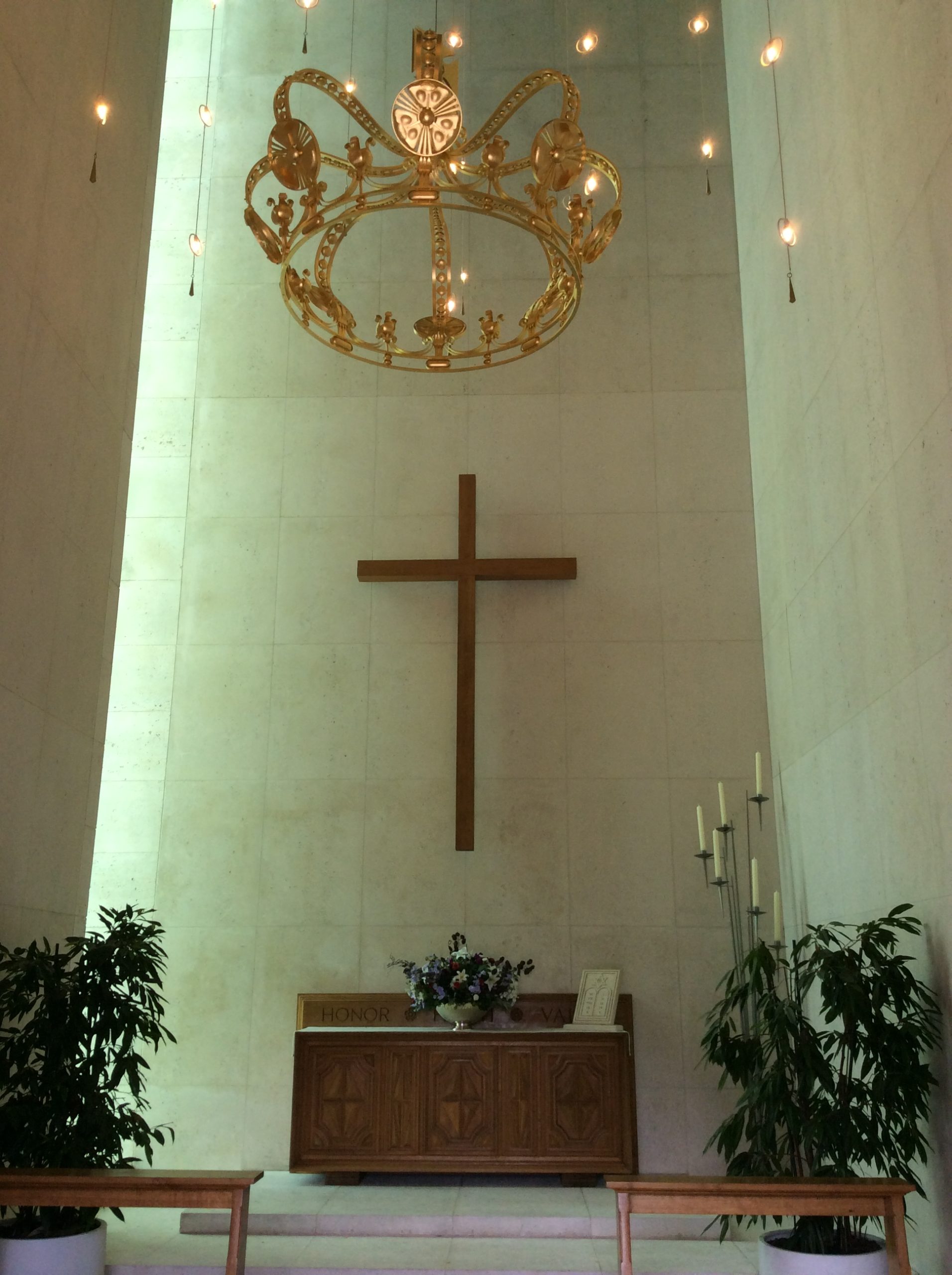
In his 2005 speech, President Bush thanked the Dutch people for their gratitude and devotion.
Recalling “the Dutch spirit in action…when this new cemetery marked its first Memorial Day… still a time of hardship and want and deprivation,” President Bush said, “yet Dutch citizens from 60 local villages collected 20 truckloads of flowers so that every American grave here would be decorated when the sun came up on Memorial Day.”
He added, “…in the six decades since, the Dutch have continued this wonderful tradition by adopting and attending to the graves of the people they never met. Your kindness has brought comfort to thousands of American families separated from their loved ones here by an ocean…”
And the Dutch have continued to “adopt” the graves of Americans buried at Margraten.
Mike Corder at AP World News writes:
People who adopt a grave visit it regularly and leave flowers on the fallen soldier’s birthday, the day they died, at Christmas, on Memorial Day or whenever else they see fit. Some reach out to families of the dead in the U.S., forming lasting transatlantic friendships.
Dutch interest in such “adoptions” is so high that the Foundation for Adopting Graves at the American Cemetery Margraten closed the waiting list in 2021, when it grew to 1,000 names. More than 700 hopeful adopters remain on the list, with between 30 and 60 graves becoming available each year, according to the Smithsonian Magazine.
It is thus no wonder that recent reports in the Dutch media have offended, dismayed the Dutch.
According to the reputable NRC and other sources, two panels commemorating African American soldiers who fought against Nazi Germany in Europe during WW II have been removed without explanation.
One of the missing panels informed visitors on how African American soldiers fought both the German occupiers and racism within their own army in a segregated U.S. military, many of them tasked with digging graves.
The other plaque detailed the life of Technician 4th Class George H. Pruitt, an African American soldier who drowned trying to save a comrade’s life during a rescue attempt in 1945. He was 23 years old.
Thom Canters writes at de Volkskrant, “[t]his appears to be part of the Trump administration’s fight against everything it labels ‘woke,’” and recalls Pete Hegseth’s “removal of thousands of web articles containing stories and images about Black, Indigenous, gay, and female veterans.”
BNNVARA, a broadcasting association and network, has even stronger words.
Under the headline, “Racist Trump regime has information about Black WWII soldiers removed from Margraten,” it writes, “Researchers and advocacy groups point out that the intervention is part of the fascist Trump regime’s policy of rolling back all so-called diversity and inclusion initiatives. In practice, this means that Black people and women are being dismissed and erased from history by the regime.”
Newsweek is somewhat more circumspect:
The White House, under President Donald Trump, has cracked down on programs aimed at diversity and inclusion, an attitude echoed by Defense Secretary Pete Hegseth in his reshaping of the Pentagon and the U.S. military. Arlington National Cemetery in March removed references to the history of Black and female service members from its website, and the Pentagon in the same month restored a webpage celebrating U.S. Army Major General Charles Calvin Rogers, a recipient of the U.S. highest military honor and a Black Vietnam veteran, after an outcry at its removal.
The American Battle Monuments Commission (ABMC), which manages American war graves and monuments outside the US, offers no clear explanation for the removal except for noting that “[p]anels like the one about Pruitt were ‘designed to rotate regularly throughout the exhibition’s run, so that as many individual stories as possible are featured.’”
Theo Bovens, leader of the Christian Democratic Appeal (CDA) party in the Dutch Senate and chairman of Black Liberators in the Netherlands, told Newsweek “We hope that the panels will come back, because of the importance of the contribution of Afro-American soldiers to the liberation of the Netherlands.”
He plans to raise the issue of the panels’ removal with the new US ambassador to the Netherlands, Joe Popolo. “What remains at the visitor center exhibit is simply not enough attention for the Black liberators,” Bovens told NRC.













